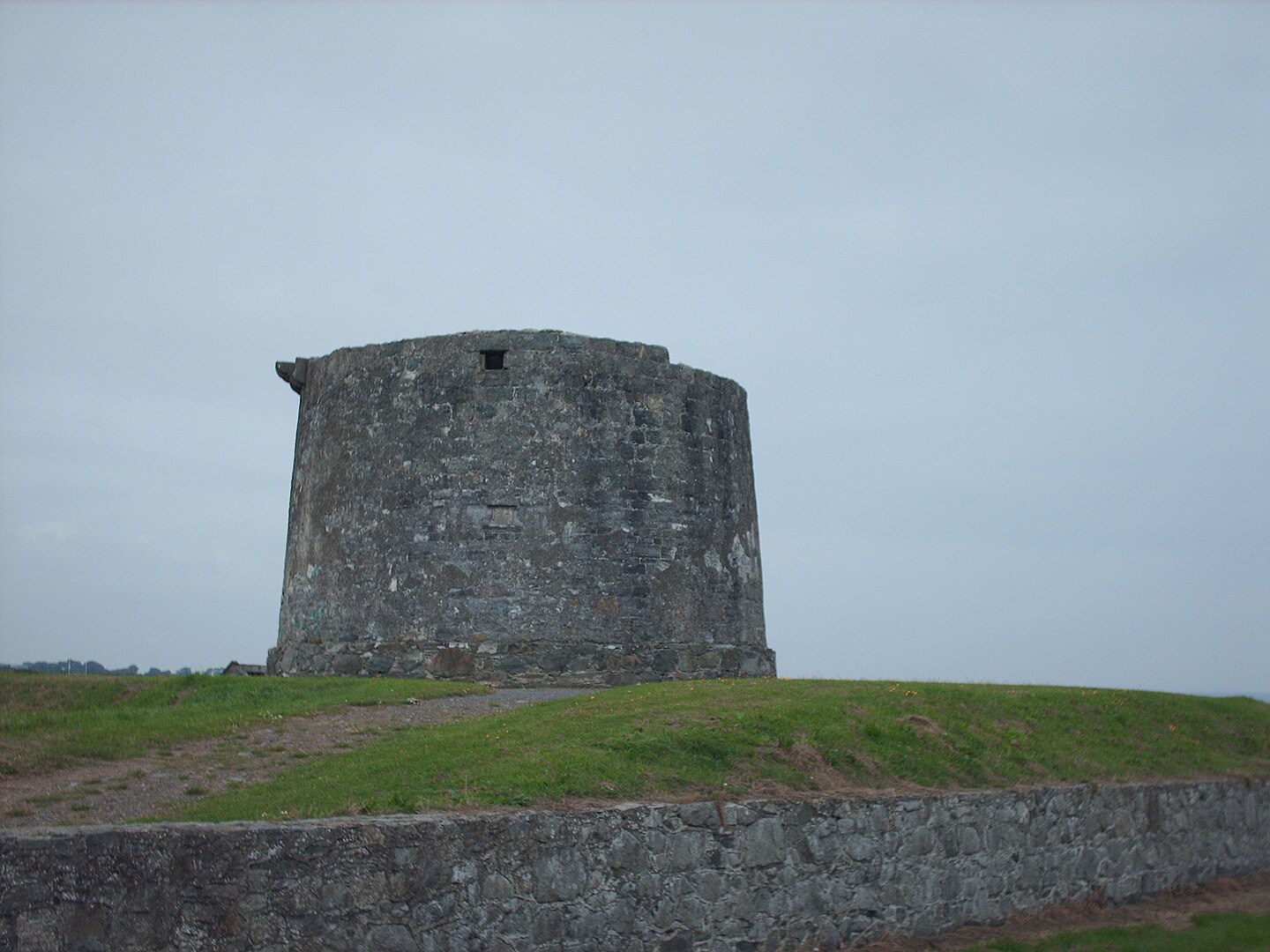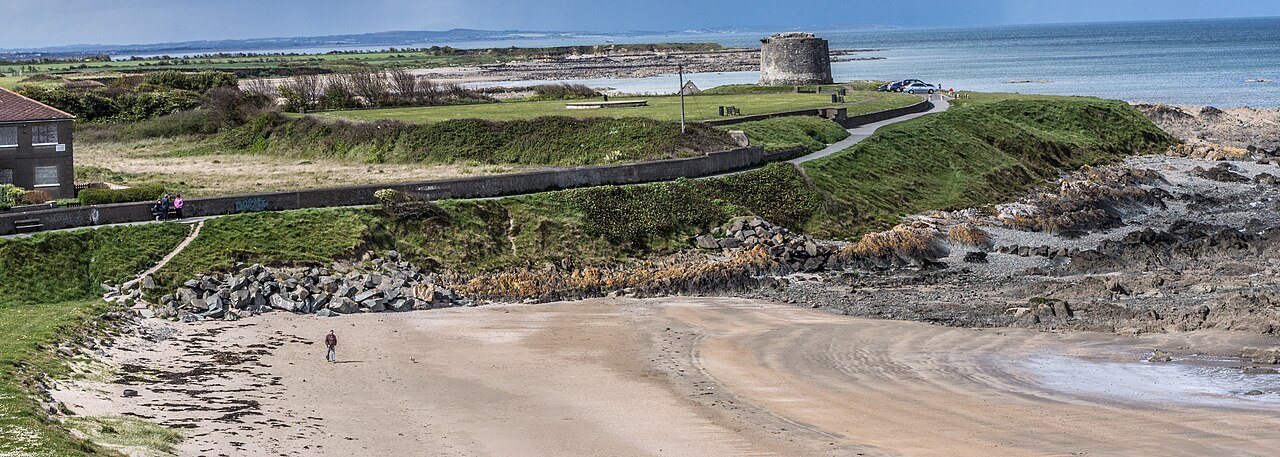Bremore Port – Prestige Project

In late 2007, Drogheda Port Company signed a joint venture partnership deal with Castle Market Holdings Ltd. (a subsidiary of Treasury Holdings) to form the Bremore Port Company. Under the remit of this company, a new deep water port will be built on a greenfield site at Bremore in north Co. Dublin.
The project, budgeted at some €300 million, has been given full approval by the Government. Hutchinson Port Holdings, a division of Hutchinson Whampoa, has already been appointed to operate the port. Meath County Council has purchased an extra 250 acres at Gormanstown for 'logistics and infrastructure'. The port will be linked to the already over-capacity M50 motorway by the M1. This development is being used as an argument for Bremore to form the northern part of a proposed Dublin orbital route, which is to encircle the M50 at a cost of €2 billion.
It will be wondered, in the light of this development, what is to become of the ports at Drogheda and Dublin. Here is what the Irish Exporters Association has to say. "Ireland's national ports are facing a capacity crisis. The growth in exports... and the boom in imports has wiped out the capacity of most ports." The website Irishtrucker.com says, "The Bremore site... represents most probably the last remaining opportunity [?] for a significant and sustainable new port development along the east coast of Ireland." Anyone who is aware of the current state of Ireland's ports will recognise these statements for what they are, namely, complete nonsense. Ireland's ports have been left underfunded, underdeveloped, and in many cases, derelict for many years. A good part of Dublin port's facilities, to take a key example, consist largely of unused storage, abandoned buildings, and waste ground. How can the egregious underuse even of Ireland's principal port be termed a "capacity crisis"?
It is worth remembering that the Dublin Port Tunnel is barely a year old. The rationale for the Tunnel's construction was to divert port traffic away from the city, and to support the continued expansion and development of Dublin Port. Now Dublin Port is to be abandoned. The Progressive Democrats (the Dáil's smallest political party, never elected but somehow in government for a second term) have already proposed the abandonment of Dublin Port, the land to be used instead as a developer's paradise of high-cost apartment blocks and office space.
Closure of ports
But in reality this question is beside the point. The Bremore Port decision has been made for reasons that have little to do with economic development or port capacity. The unspoken assumption in the choice of location is that Dublin and Drogheda ports - both them perfectly viable but underused – will both be closed down in favour of this new facility. But Drogheda and Dublin are just two instances of an overall trend. The deterioration of facilities at major ports across the country, and the comparatively trifling investment in them, is now being used as an excuse to close the facilities and/or 'redevelop' them for other purposes. A proposed sale of 13 acres by the Port of Waterford company for a development involving 'hotels, marina developments, offices and apartments' has been shelved after a development company pulled out of the deal. The project, according to RTE News, was 'central to the rejuvenation of the city centre' and 'was expected to lead to other developments along what was once known as Europe's finest quays'. The project was assuredly not central to further development of Waterford port, however, but central to a development model based on privatising publicly-owned assets and operating them for profit; more specifically, it involves closing strategically important ports and forcing port towns to rely totally on private sector 'investment', which in reality involves giving public property and money into private hands.

A similar plan is underway at Bremore. Contrary to the protestations of those in favour of the project, which is typically unanimous across party and bureaucratic lines, the scheme is an integral part of the long-term plan to shut down economic development outside the 'Greater Dublin Area', and to centralise all investment in Dublin and the surrounding counties. The bulk of economic and infrastructure investment for these counties, Wicklow, Meath, and Kildare, is aimed at suburban expansion and population centralisation. Bremore is to form a component of the economically nonsensical spider's web of motorways being constructed about Dublin. This point merits some emphasis. All infrastructure and support services for this proposed new port will have to be created from the ground up. The taxpayer is expected to foot the bill not only for the port, a project which is certain to sideline the two ports between which it will be located, but also for the new motorway the State says is required to deal with the capacity crisis on the M50 motorway, just as €1 billion in upgrades (now several years in the works) were required to cope with the existing traffic flow on the M50. The determination to sink tens of billions into new building motorways centred on Dublin represents a commitment of a large portion of the national budget, and is being done without the benefit of research, consultation, or sound evidence of any kind, at a time when education and health, already secondary national priorities, are subject to further cutbacks.
Government legislation for corporate interests
The project comes under the remit of the Planning and Development (Strategic Infrastructure) Act 2006, which enables projects dubbed 'of strategic importance' to bypass the normal planning procedure, including the already limited degree of public consultation existing under the old planning regime, and to be rubber-stamped by An Bord Pleanála. This is a telling move from an administration which has previously attacked opponents of contentious planning decisions, citing the integrity of the planning process. The Act will force through large projects that have been devised principally with corporate interests in mind (in other words, practically every major taxpayer-funded PPP project) and to exclude even the minimal public input permitted by the normal planning regime. The facade that has hitherto been maintained, that these projects somehow serve the public interest in proportion with the vast sums poured into them, can no longer to be maintained. That particular facade lost all credibility with the advent of the Corrib gas project and the M3 motorway.
It is worth remembering that the Dublin Port Tunnel is barely a year old. The rationale for the Tunnel's construction was to divert port traffic away from the city, and to support the continued expansion and development of Dublin Port. Now Dublin Port is to be abandoned. The Progressive Democrats (the Dáil's smallest political party, never elected but somehow in government for a second term) have already proposed the abandonment of Dublin Port, the land to be used instead as a developer's paradise of high-cost apartment blocks and office space. The Dublin Port Tunnel now stands as a €1 billion monument to criminal fraud, a charity exercise on behalf of Kellogg, Brown and Root, until recently the construction subsidiary of Halliburton. The Bremore project is the pretext required for winding up Dublin Port and handing all its operations to Hutchinson Port Holdings.
The puzzle as to why, long years after the ESB's study and with much motorway and Port Tunnel construction having taken place, the Bremore project should suddenly have become attractive again may have a lot to do with the location. It is to be situated strategically, on the Dublin-Meath border. There is an evident determination to squeeze as many motorways into Meath as possible. This can be explained both by its mineral resource potential and its rich historical associations. It is no accident that the 250-acre development happens to be planned for the exact location of a complex of passage tombs, estimated to date to c4,000 BC. This, presumably, is to be ploughed aside. A port location at Bremore, in close proximity to a brand new motorway, will facilitate the export of ore from Tara mines (and other, yet-to-be-developed locations in Meath) for processing in other countries. This ensures the perpetuation of an economic model for Ireland which sees the country as a low-tax home for taxpayer-bankrolled free enterprise, a source of cheap raw materials, extracted with minimal expense and exported for processing elsewhere.
© The Tara Foundation, 2008
NB: The location of the Bremore Port plan was successfully challenged by An Taisce and other heritage organisations due to the location of a complex of Neolithic passage tombs at Bremore Head. A new proposal to locate the port north of Bremore was presented in October 2023.
https://businessplus.ie/news/bremore-deep-water-port-project/
